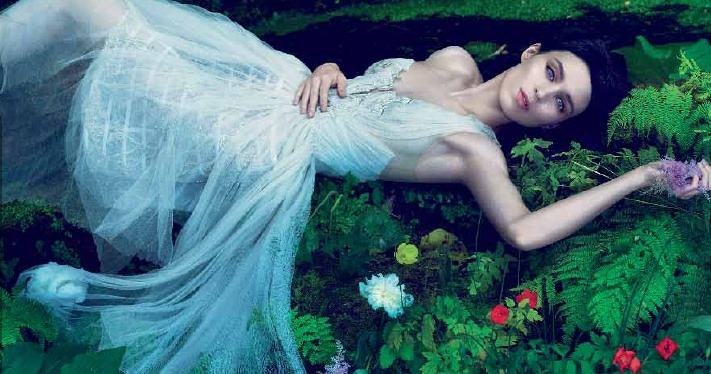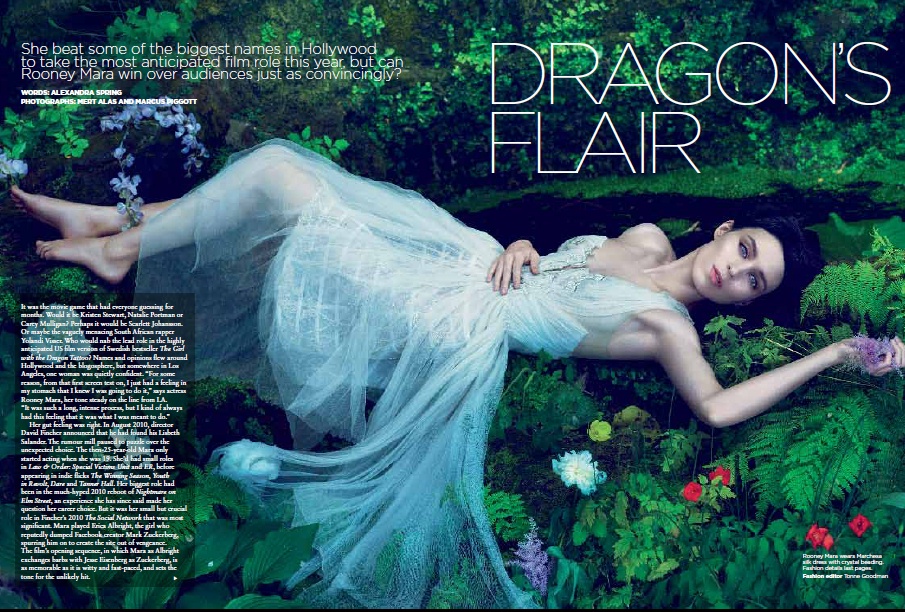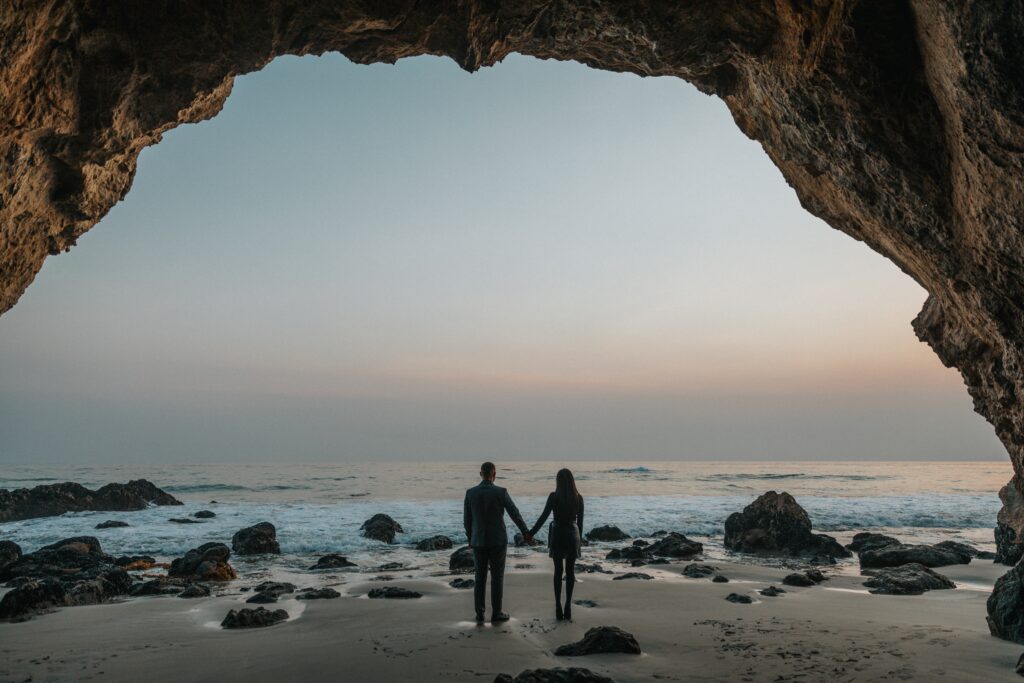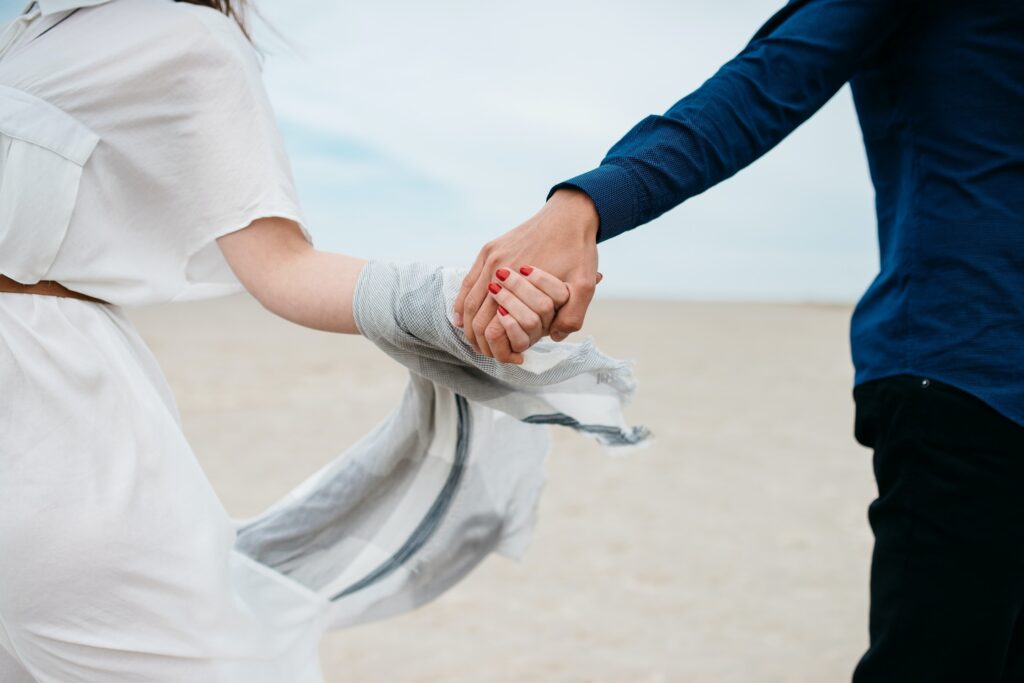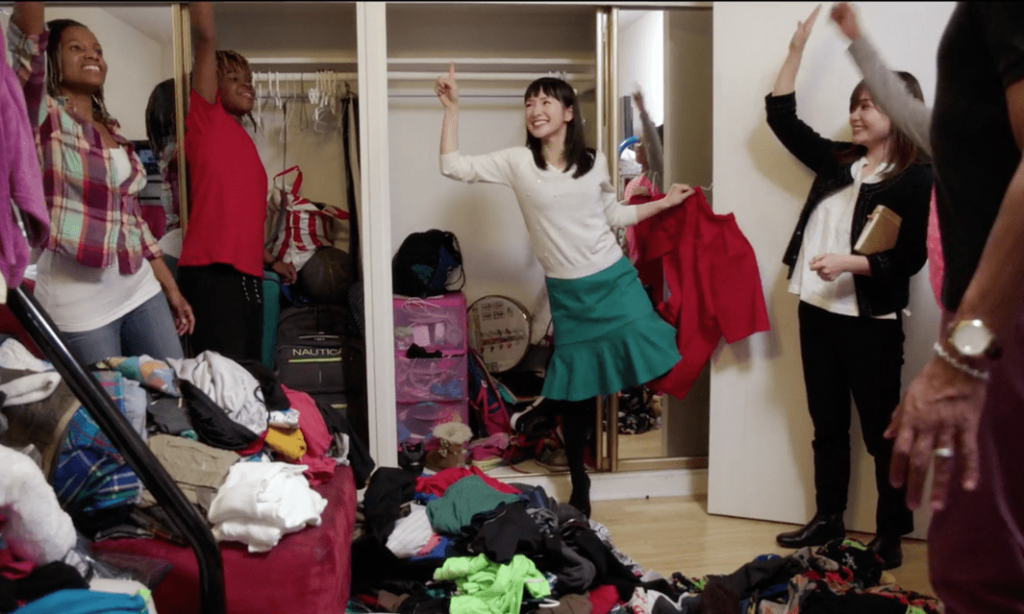It was the movie game that had everyone guessing for months. Would it be Kristen Stewart, Natalie Portman or Carey Mulligan? Perhaps it would be Scarlett Johansson. Or maybe the vaguely menacing South African rapper Yolandi Visser. Who would nab the lead role in the highly anticipated US film version of Swedish bestseller The Girl with the Dragon Tattoo?
Names and opinions flew around Hollywood and the blogosphere, but somewhere in Los Angeles, one woman was quietly confident. “For some reason, from that first screen test on, I just had a feeling in my stomach that I knew I was going to do it,” says actress Rooney Mara, her tone steady on the line from LA. “It was such a long, intense process, but I kind of always had this feeling that it was what I was meant to do.”
Her gut feeling was right. In August 2010, director David Fincher announced that he had found his Lisbeth Salander. The rumour mill paused to puzzle over the unexpected choice.
The then-25-year-old Mara only started acting when she was 19. She’d had small roles in Law & Order: Special Victims Unit and ER, before appearing in indie flicks The Winning Season, Youth in Revolt, Dare and Tanner Hall. Her biggest role had been in the much-hyped 2010 reboot of Nightmare on Elm Street, an experience she has since said made her question her career choice.
But it was her small but crucial role in Fincher’s 2010 The Social Network that was most significant. Mara played Erica Albright, the girl who reputedly dumped Facebook creator Mark Zuckerberg, spurring him on to create the site out of vengeance. The film’s opening sequence, in which Mara as Albright exchanges barbs with Jesse Eisenberg as Zuckerberg, is as memorable as it is witty and fast-paced, and sets the tone for the unlikely hit.
Mara worked with Fincher for just four days on The Social Network, but she made an impression, completing almost two and a half thousand takes under the director’s infamously unrelenting process without flagging. She impressed him again during the lengthy and gruelling audition process for Dragon Tattoo, learning to ride a motorcycle and to kickbox, as well as performing some of the torturous sex scenes without flinching. Fincher knew he had found his girl.
“I kind of always had this feeling
that it was what
I was meant to do.”
When Mara and I speak, the marketing juggernaut behind the “feel-bad movie of Christmas” is about to be launched. The actress is bracing herself for it: “I’m as ready as I can be,” she says dryly. “I wouldn’t mind having a little bit more time before it starts, but I think I’m pretty ready.” So far, so good. “It’s definitely affected the opportunities that I’m presented with, which I’m so grateful for and which have been amazing, but it hasn’t really affected much else. I’m hoping to keep everything as normal as I can.”
Somehow Mara’s current version of normal is unlikely to remain the same, because whatever happens, it will be big. Stieg Larssen’s Millennium trilogy, The Girl with the Dragon Tattoo, The Girl Who Played with Fire and The Girl who Kicked the Hornet’s Nest, has sold more than 65 million copies worldwide.
Since 2005, no flight, bus or train ride has been complete without a sighting of one of the three thrillers that follow crusading journalist Mikael Blomkvist and his brilliant but dysfunctional hacker sidekick Lisbeth Salander as they take on Sweden’s corrupt businessmen, politicians and police. When the three novels were adapted into Swedish-language films they grossed more than $200 million globally, an unheard-of amount for a subtitled film, and introduced Swedish actress Noomi Rapace to the world.
Mara knew she had to commit totally to the role. “It felt to me as if this was an amazing opportunity and an amazing character and I really just wanted to go all out for it and do everything that I could.” In one day, her long brown hair was jaggedly cropped, her eyebrows bleached, and her nose, lip, brow, ears and nipple pierced. Her wholehearted transformation from fragile wide-eyed American beauty into sullen Scandinavian street punk convinced otherwise sceptical studio bosses and appeased devoted fans.
She also donned the hacker’s guise of ripped T-shirts, stockings, heavy leather jackets and boots so enthusiastically that the look has infiltrated her own wardrobe. “I have so many freaking dresses in my closet and I never want to put one on any more. I definitely dress more like a tomboy now. I have a bit of a utilitarian type of thing [going on]. Maybe it’ll wear off but it definitely seeped in a little bit.”She doesn’t even miss her old locks. “Someone put a long brown wig on me the other day and it freaked me out so much. It was like I didn’t recognise myself.”
By all accounts, the seven-month shoot was extreme. Murder, rape, torture and a splash of Nazism are all an intrinsic, albeit disturbing, part of the story, and one can only imagine their recreation under Fincher’s notoriously detail-obsessed eye. Mara is hard-pressed to pick the most difficult moment, but she says there were just as many uplifting moments. “I think just the whole experience was really empowering.”
One of the book’s particularly unforgettable events involves Salander taking full, gory and utterly justified revenge on her cruel guardian. It’s a fist-pumping triumph to read, but filming the gruesome scene wasn’t quite the same. “I definitely felt [it was liberating] when I read it in the story,” says Mara, “but I don’t know that I felt that while I was shooting it because it was quite grotesque and intense. I don’t think it’s something she really got pleasure out of. I think that’s more a feeling the audience gets.”
Although the film is undoubtedly going to change her life professionally, Mara says it remains to be seen how much playing this strange, disquieting character has changed her personally. “I don’t really know. There’s probably a lot of it there to begin with, and that’s why David wanted to hire me for the part,” she says “Obviously it was over a year of this really intense experience, so you learn things and you grow from any experience that’s that long and intense, [but] I can’t really identify what those things are.”
She dodges the question when asked if Salander was a difficult character to let go of when filming finished. “I don’t know if it was so difficult to shake off. I think it’s really hard to come down off working on this incredible project, to go from 16 hours a day of working and being really in something, the energy and the adrenalin’s so high. To come off that is certainly difficult.”
Salander is an unlikely heroine and it’s curious to see how much readers identify with the spiky hacker and the protectiveness she seems to inspire. Mara has her own theory. “Most people, if not everyone, at some point in their lives can relate to that feeling of being held back by people from a place of power, of being marginalised or feeling like they don’t fit in, or that they can’t move forward in life. I think everyone can relate to that feeling [and] to this character and really roots for her and wants to see her succeed.”
There were some grumblings about the necessity of making English-language versions, given the Swedish films had been so successful. Mara brushes them off. “People get all upset about that, and I can understand that, but we’re not remaking a movie, we’re making our own interpretation of the book. At the end of the day, by making our own version, it only brings more awareness to the source material and the book and brings more notice to the Swedish movie. So really, at the end of the day, everyone wins.”
“You learn things and
you grow from any experience that’s that long and intense,
[but] I can’t really identify what those things are.”
And while she’s prepared for the inevitable comparisons between her and Noomi Rapace’s performances, she won’t be fazed by her predecessor. “I had my own idea of who the character was and what I wanted to bring to it.”
Although no dates have been set, and much depends on the reception of the multi-million-dollar blockbuster, Mara has signed on to shoot the other two novels within the next five years. In between, there will be time for other film projects.
She laughs when asked if she’s looking for something with a change of pace. “I think whatever your last movie is, it always affects what your choices are. I don’t know if I’m going to be able to do a romantic comedy, but certainly I’ll try to find something a little lighter than this.”
Not much lighter, as she is slated to appear in the quirky indie film Emanuel and the Truth about Fishes, as a troubled teenager obsessed with the mysterious neighbour who resembles her dead mother. She’s also set to work with another finicky filmmaker, Terrence Malick, on one of his new films, Lawless, opposite Ryan Gosling, Christian Bale and Cate Blanchett, later this year.
She will also continue her other passion project, working with Faces of Kibera, the Kenyan not-for-profit organisation she founded as a 21-year-old. After travelling through the region, she felt compelled to do something about the unrelenting poverty she saw, particularly for the orphans of Kibera, outside Nairobi, one of the largest slums in the world.
Faces has since merged with larger organisation Uweza, but Mara still sits on the board and works constantly on fundraising for the organisation’s food, health and education programs. It remains a fundamental part of her life and she’d like to see it grow and develop. “It’s important for the obvious reasons [but] I think it’s good as an actor or as any human, really, to have other things that you’re passionate about and that’s something I’m really passionate about.”
She’s also hoping the increased attention coming her way will have a knock-on effect for her charity. But for now, she waits with bated breath for the film’s release. “I’m excited for people to see the movie and to see all the hard work that everyone put into it, but I think that’s probably also the most daunting part of it, for everyone to see the movie.” Because she knows everyone will be watching.
Published in Vogue Australia February 2012
